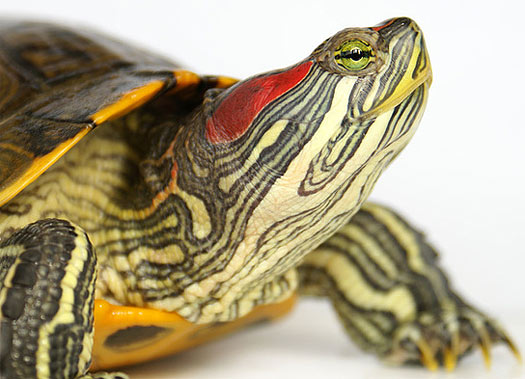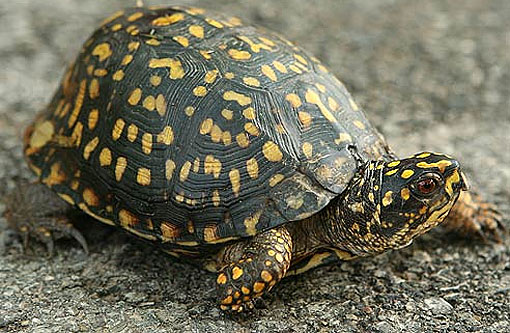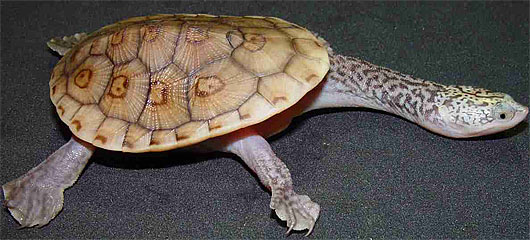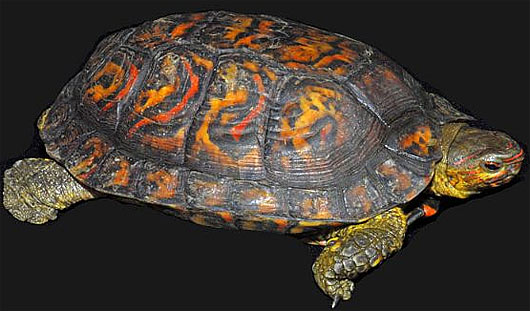Turtles – The Reptiles with Big Shells

There are about 260 species including very different types such as the alligator snapping turtle, sea turtles, giant tortoises and sideneck turtles. Turtles have a longer life span than other vertebrates, with some of the smaller species living fifty years and larger species living up to two hundred years! Unlike most reptiles, it seems that people in general have more positive opinions of turtles and mostly like them.

Shell size and shape largely determine the lifestyle of the reptile. Land-dwelling types such as box turtles (Testudo) and tortoises (Geochelone) have big, high domed shells. This reduces surface area whereby they can lose water and is also tough for predators to grab and/or break. All the aquatic and marine species, have flatter streamlined shells for better dynamics in the water. There are a few exceptions – the African pancake tortoise has a flat shell that allows it to hide in rocky crevices. The mud turtles of the southeastern United States, have tall, high-domed shells. Snapping turtles have shells that are rough and that algae grows on, for good camouflage.


Aquatic turtles have webbed feet and sea turtles have flippers for more effective swimming. Meanwhile the land-dwellers often have spadelike feet for digging and sturdy legs to support them as they walk. Regardless, all have shells and they are the only vertebrates with this skeleton-carapace arrangement. This makes it tough for their lungs to expand, the other organs have to make room if they take a big breath. Shells also limit mobility quite a bit and so many have longer and more flexible necks which allow them to reach up and out to eat grasses, etc. Also, the neck vertebrae are modified to let the head be withdrawn into the shell, either by pulling it straight back into the shell or while the neck makes an S-shape or else by laying it to the side under the overhanging lip of the carapace (for example the sideneck turtles).

Another specialized body part are the nostrils on top of the snout or at the very tip of the snout that allows aquatic turtles to breathe at the surface with minimal exposure. And they have no teeth! Instead, they have horny beaks made of keratin shaped to cut up vegetation, tear flesh, or crush the shells of food like clams or snails.
They all lay eggs, usually in a sandy pit which requires that the hatchlings dig their way out.

